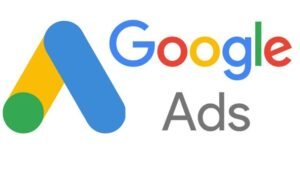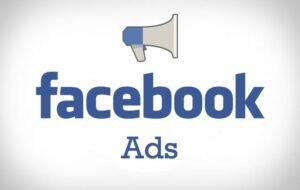Google Ads vs. Facebook Ads: When it comes to digital advertising, two of the biggest platforms that businesses turn to are Google Ads and Facebook Ads. Each offers unique advantages, targeting methods, and cost structures, making it essential to understand which one is best suited for your business. In this guide, we’ll compare Google Ads and Facebook Ads to help you make an informed decision.
Understanding Google Ads
Google Ads is a pay-per-click (PPC) advertising platform that allows businesses to display ads on Google’s search results, YouTube, and other partner sites. It primarily operates through keyword targeting, meaning ads are shown to users actively searching for related products or services.
Do You Need SEO Services? Click Now
Key Features of Google Ads
- Search Network Ads: Appear on Google search results when users enter relevant keywords.
- Display Network Ads: Image or video ads displayed on various websites and YouTube.
- Shopping Ads: Showcase product listings directly in search results.
- Remarketing Ads: Re-engage users who have previously visited your site.
- Local Service Ads: Best for service-based businesses targeting local customers.
Advantages of Google Ads
- High Intent Traffic: Users are actively searching for specific products or services.
- Wide Reach: Google dominates search with billions of daily queries.
- Diverse Ad Formats: Search, display, shopping, and video ads allow flexible advertising strategies.
- Robust Analytics: Access to detailed performance metrics to optimize campaigns.
Disadvantages of Google Ads
- Higher Cost Per Click (CPC): Competitive industries can drive up ad costs.
- Steeper Learning Curve: Requires a solid understanding of keyword targeting and bidding strategies.
- Limited Social Engagement: Not ideal for brand awareness or social interactions.

Understanding Facebook Ads
Facebook Ads operate on a pay-per-impression (PPI) and pay-per-click (PPC) basis, allowing businesses to target users based on demographics, interests, and behaviors rather than search intent. Ads appear on Facebook, Instagram, Messenger, and the Audience Network.
Key Features of Facebook Ads
- Image and Video Ads: Visually engaging ads appearing in feeds and stories.
- Carousel Ads: Multiple images or videos in a single ad.
- Collection Ads: Showcase a catalog of products within a single ad.
- Lead Generation Ads: Capture customer information without leaving Facebook.
- Retargeting Ads: Reconnect with users who engaged with previous ads.
Advantages of Facebook Ads
- Advanced Audience Targeting: Leverages user data for precise targeting.
- Cost-Effective: Generally lower CPC compared to Google Ads.
- High Engagement: Encourages likes, shares, and comments, enhancing brand visibility.
- Visual Appeal: Supports various rich media formats.
Disadvantages of Facebook Ads
- Lower Purchase Intent: Users are not actively searching for products.
- Ad Fatigue: Users may become desensitized to repeated ads.
- Privacy Restrictions: Data privacy changes may limit targeting effectiveness.

Comparing Google Ads vs. Facebook Ads
1. Audience Targeting
- Google Ads: Targets users based on keyword searches and browsing behavior.
- Facebook Ads: Targets users based on demographics, interests, and social behavior.
2. Cost and ROI
- Google Ads: Higher CPC but higher conversion rates due to search intent.
- Facebook Ads: Lower CPC but may require more nurturing to convert leads.
3. Ad Formats and Creativity
- Google Ads: Primarily text-based with some display and video options.
- Facebook Ads: Highly visual with images, videos, and interactive elements.
4. Conversion Rate
- Google Ads: Higher conversion rate due to search intent.
- Facebook Ads: Lower conversion rate but better for brand awareness and lead generation.
5. Best for Business Types
- Google Ads: Best for businesses offering products or services people actively search for (e.g., e-commerce, service providers, SaaS).
- Facebook Ads: Best for businesses focusing on brand awareness, engagement, and impulse purchases (e.g., fashion, lifestyle, entertainment).
When to Use Google Ads
Google Ads is best suited for businesses looking to capture high-intent customers who are actively searching for a specific solution. It works well for:
- E-commerce stores looking to drive traffic to product pages.
- Service-based businesses need local customers.
- Software companies (SaaS) targeting decision-makers searching for software solutions.
- B2B businesses seeking leads from professionals and businesses.
When to Use Facebook Ads
Facebook Ads are ideal for businesses that need to generate brand awareness, engage with potential customers, and promote visually appealing products or services. It works best for:
- Retail brands aiming to reach fashion and lifestyle enthusiasts.
- Subscription-based services targeting specific demographics.
- Local businesses engage nearby audiences through events and promotions.
- Entertainment brands looking to build excitement for new releases or events.
Combining Google Ads and Facebook Ads
For businesses with a flexible advertising budget, combining both platforms can maximize reach and conversions. Some strategies include:
- Using Google Ads for high-intent searches and Facebook Ads for brand awareness.
- Retargeting Google Ads visitors with Facebook Ads to nurture leads.
- Running Facebook Ads to build audiences and using Google Ads to convert them later.
- A/B testing ad creatives across both platforms to determine the best-performing strategy.
Which One Should You Choose?
The best advertising platform depends on your business goals and budget. Here are some key takeaways:
- Use Google Ads if: You want to capture high-intent users who are actively searching for your offerings.
- Use Facebook Ads if: You want to build brand awareness, generate leads, or engage with potential customers on social media.
- Use Both if: You have a diverse marketing strategy and want to maximize reach and conversions.
Conclusion
Both Google Ads and Facebook Ads offer unique benefits and can be powerful tools in your digital marketing strategy. By understanding their strengths and limitations, you can allocate your budget wisely and achieve the best possible results for your business. Combining both platforms strategically can enhance visibility, engagement, and overall business growth.
